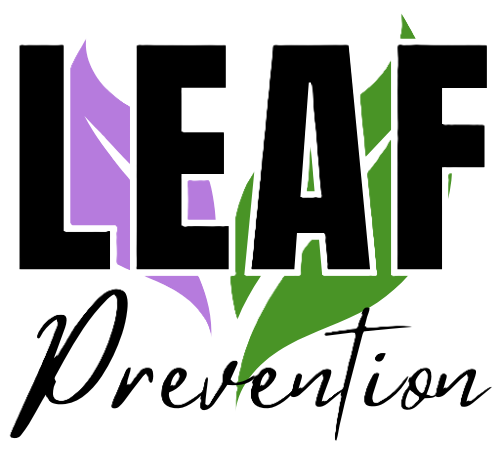

Blog Posts
“In the United States, youth use e-cigarettes, or vapes, more than any other tobacco product,” according to Centers for Disease Control (CDC). Over two million middle- and high-school students reported using e-cigarettes in 2023 (CDC 2024).
Nicotine in any form, however, can damage a young person’s developing brain. Read on to learn how—and what parents, adults, and caregivers can do to help prevent underage vape use.
Vapes and Young People—What’s the Harm?
Vaping comes with many health risks. Contrary to common myths, vaping is not necessarily safer than smoking cigarettes.
The chemicals in a vape or e-cigarette are delivered via heated liquid that turns into an aerosol. The aerosol, or vapor, can be an extremely potent mix of nicotine, chemicals, flavorings, or cannabis products.
A few health risks associated with vaping are:
-addiction to nicotine;
-mental health challenges, such as anxiety or depression;
-sleep disturbances;
-risk of cancer;
-chronic breathing problems, cough, and lung damage.
For developing brains, there are more specific risks to vaping. Nicotine can cause disturbances in mood and regulation.
The substance is also highly addictive—which means that nicotine works on the reward system of the brain to encourage the smoker to seek more and feel rewarded for doing so. For teens who are still establishing their life skills, smoking of any kind can hijack their brains and make it more challenging to make healthy choices.
Although vaping advocates claim that vaping can help a person step down their nicotine use and eventually quit, research shows that vapes aren’t generally being used that way. CDC states that, “In March 2022, products with a nicotine strength of 5% or more made up 81% of total e-cigarette unit sales. In recent years, the price of high-nicotine products decreased or stayed the same while the price of low-nicotine products increased” (CDC 2024).
The Guardian recently reported on research in the UK that revealed18- to 24-year-olds had used increasingly higher amounts of high-strength nicotine (via e-liquids in vape devices) between 2016 and 2021.
Deborah Arnott, an author of the research study, states, “Curbing underage vaping can best be achieved by making all vapes less appealing and increasing the price at point of sale, whatever their nicotine content” (Thomas 2024).
Why Kids and Teens Vape
-Unfortunately, tobacco advertising is still alive and well. Ads for e-cigarettes have promoted the idea that vaping can help you quit smoking, although it isn’t an FDA-approved quit aid.
-With the rise of the vape industry, many new flavors have come out, attracting younger users. From fruit to candy to even cheesecake, the flavor selection for vape juice is truly staggering. In 2020, New York State banned the sale of flavored nicotine products, but the products are still being produced and making their way into the market.
-The designs of vape and e-cigarette devices may look sleek, stylish, or fun, which may entice younger smokers.
-Social influence remains a major issue for teens and young adults. In a recent survey of US middle- and high-schoolers, 32.3 percent of those who smoked e-cigarettes got them from a friend (CDC 2024).
-Nicotine is extremely addictive; once a person tries it, the brain encourages repeated use. This is only reinforced more when the nicotine use soothes feelings of anxiety or stress.
What Adults Can Do to Help
How can parents and other adults help a child or teen who may be vaping?
-Model healthy choices at home.
-Talk with your child about the choices you’ve made about nicotine and why. Age-appropriate conversations about nicotine can be helpful at any age.
-Learn to recognize the signs of vaping. Be aware of any new coughs or physical ailments in your child. Keep an eye out for e-cigarette supplies in the house. More information on vape lingo and what e-cigarettes look like is available here from the American Heart Association.
-If your child vapes, try to understand their motivation. Identifying a problem, such as anxiety, may help you and your child find alternative solutions.
-Discuss why quitting is important (or why it’s better not to start in the first place). Scare tactics alone aren’t enough to convince a person to quit smoking or vaping; focus on the positive aspects of abstaining, such as saving money, performing better athletically, or leading a healthy lifestyle.
-Always communicate your care and concern for your child’s health. Don’t make the conversation solely about adhering to the house rules; appeal to your connection and relationship.
If you need help with a family member who is vaping, contact LEAF at (607) 432-0090. Our staff is prepared to connect you with resources to support healthy choices!
Sources:
American Heart Association. “The 101 on E-Cigarettes Infographic.” Accessed July 11, 2024. https://www.heart.org/en/healthy-living/healthy-lifestyle/quit-smoking-tobacco/the-101-on-e-cigarettes-infographic.
American Lung Association. “9 Strategies Big Tobacco Uses to Addict Kids to E-Cigarettes.” Accessed July 11, 2024. https://www.lung.org/research/sotc/by-the-numbers/8-things-industry-ecigs.
CDC. “E-Cigarette Use Among Youth.” Smoking and Tobacco Use, June 17, 2024. https://www.cdc.gov/tobacco/e-cigarettes/youth.html.
CDC. “Why Youth Vape.” Smoking and Tobacco Use, June 17, 2024. https://www.cdc.gov/tobacco/e-cigarettes/why-youth-vape.html.
Gaines, Lee V. “Parents, It’s Time to Talk to Your Child about Vaping.” NPR, April 12, 2024, sec. Life Kit. https://www.npr.org/2024/04/09/1196979016/how-to-talk-to-your-child-about-vaping-ecigarettes.
National Institute on Drug Abuse (NIDA). “Vaping Devices (Electronic Cigarettes)” January 8, 2020. https://nida.nih.gov/publications/drugfacts/vaping-devices-electronic-cigarettes.
“New York State Department of Health Announces Statewide Ban of Flavored Nicotine Vapor Products Takes Effect Today.” Accessed July 11, 2024. https://health.ny.gov/press/releases/2020/2020-05-18_fl_nicotine_vapor_products_ban.htm.
Thomas, Tobi. “Sharp Rise in Use of High-Strength Vapes, Research Shows.” The Guardian, June 19, 2024, sec. Society. https://www.theguardian.com/society/article/2024/jun/20/sharp-rise-use-high-strength-nicotine-vapes-research.
“Vaping: What Parents Should Know (for Parents).” Accessed July 11, 2024. https://kidshealth.org/en/parents/e-cigarettes.html.